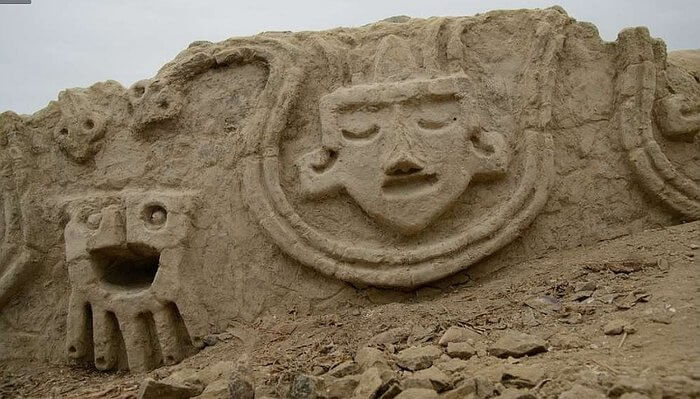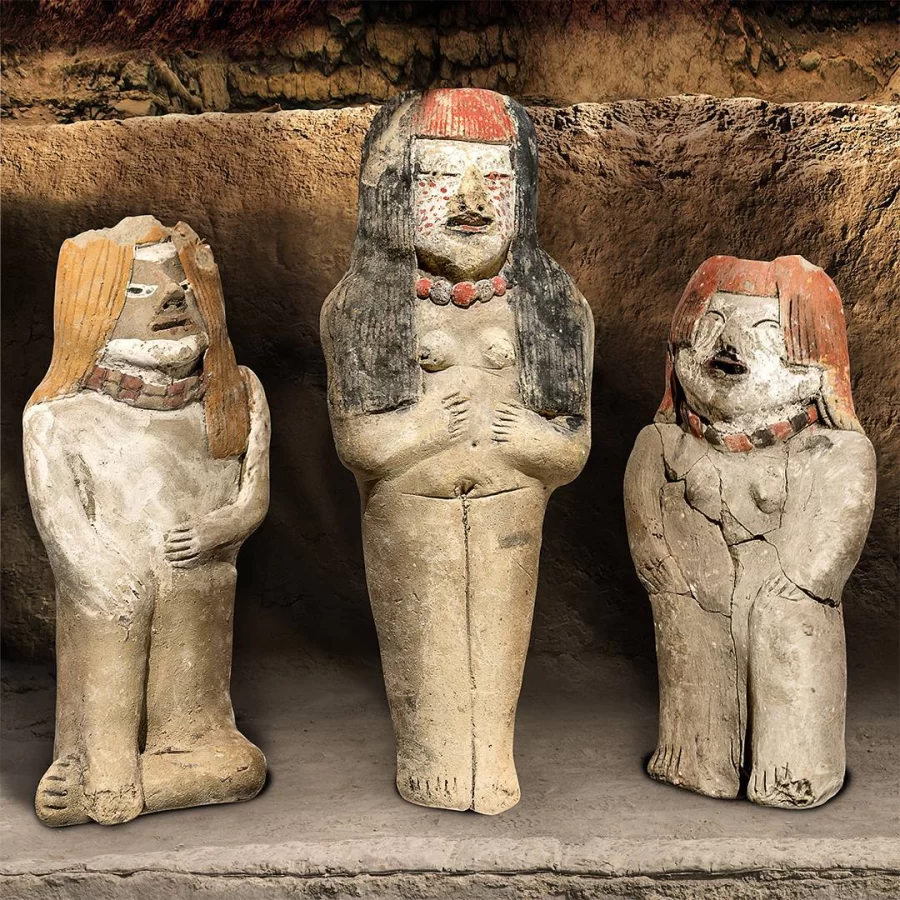The archaeological site of Vichama is part of the archaeological complex of Caral, a group of the first Peruvian civilizations located on the Pacific coast.
Vichama is the answer to why the Caral abandoned their citadel, it is undoubtedly one of the greatest examples of how climate change can affect civilizations, and it is also an example of how the ancient inhabitants acted in the face of the consequences of the lack of water.
Table of Contents
The first settlers of the Peruvian coasts, developed the bases for what would be the social constitution of the following generations of civilizations and cultures.
Vichama was a very old town, which was in contact with other villages of the Peruvian Coastal Valley, an incipient town, which failed to develop agriculture or livestock, lived based on the collection of fruits and leaves, while fishing. This led to a continuous search for food to ensure survival and this triggered a shortage of food due to predation.
But it is thanks to this stage of human development, which could begin to differentiate plants with nutritional properties of toxic plants, as well as identify the times of presence of fruits and the best places where they grew, which was a very important process to start the domestication of plants and thus to develop agriculture in the future.
In the archaeological excavations, relief murals have been found, showing children and men with empty stomachs in the middle of skeletons, which would be a great indication of the period of scarcity and famine that the population went through.
A humanized toad is also portrayed, which was a deity associated with water.

The origin of cultures is often told in myths and legends, which are always wrapped in mythological events that include the participation of Gods and magical beings. Thus, the origin of Vichama is also wrapped in local myths, which were compiled during the year 1617 by the Jesuit Father Luis Teruel.
In ancient times, Pachacamac created a couple of humans, in the midst of a great drought and lack of food, because of this only the woman was left alive, who in tears was looking for roots and food, it was then when the Sun, father of Pachacamac, took pity on her and blessed her, giving birth to a child 4 days later and promising abundance.
Pachacamac upon learning of his father's intervention, choleric, murders the child and dismembers him, uses the teeth as corn seeds, the bones as sweet potato seeds, yuccas and pacae, this is how the abundance of food began and the end of the famine arrives.
The woman was grief-stricken by the absence of her son, so the Sun resurrected the child from his navel, and called him Vichama, who was a demigod and brother of Pachacamac, who grew strong and traveled continuously. Pachacamac still furious, takes advantage of Vichama's absence and murders his mother, giving her body and bones to the condors, and giving rise to more men and women, giving them curacas to govern them, all of them created from the hair of the woman.
The young Vichama when returning, saw what Pachacamac had done and enraged, went out to look for his brother without being able to reach him, which increased his anger and turned the curacas into rocks and the men into small stones.
Vichama searched for the remains of his mother, and with the help of his father the Sun, he brought her back to life. Repentant of the damage caused to the natives, Vichama begged his father the Sun to repopulate the earth, so the Sun dropped 3 eggs, 1 of gold from which the curacas and rulers were born, the 2 silver egg from which the women of the chiefs were born and from the 3 copper egg the towns were born. Vichama then took care of the men, providing them always with food and abundance, at the same time that he instituted the adoration to the rocks that before were the curacas, giving offerings of silver, chicha and fruits.
This is how under the cosmovision of these people, Vichama and Pachacamac are considered brothers of different energies, while Vichama represents abundance, fertility and the day, Pachacamac represents the night, catastrophes and tremors. This is how they explained the day and night and how Vichama would never reach Pachacamac.
This thought is also portrayed in the two-faced idol, in which Vichama is represented on one side holding ears of corn, which associates it with abundance and fertility, and on the other side is Pachacamac adorned with condor feathers and roosters, associating it with death.
In 2009 the then mayor of Végueta, Jose Li Nonato, invited the renowned archaeologist Ruth Shady Solis, to take charge of the research in the buildings of the archaeological site of Vichama, and thus begins to conduct a thorough study of this archaeological complex, resulting in the recovery of 9 buildings dating from 2800 BC.
Similarly, it is evident that even in ancient times the issues of trade (barter), gender equality, interculturalism and climate problems were already being addressed. Making it very clear that although this primary people did not develop agriculture or livestock, it was an important element in what would be the social development for future civilizations and cultures that would still maintain the form of organization and government initiated by the Vichama.

The archaeological site of Vichama is located in the district called Végueta north of the Huaura River and 1.5 km from the Peruvian sea, in the province of Huaura in the city of Lima.
To get there you must travel by the Panamerican Highway north towards Huacho, this journey takes about 2 hours and 30 minutes approximately. Once you get to Huacho you must take another transport to Végueta.
Vichama is included in the tourist circuit of Caral, Áspero and Vichama, and the service is from 10 am until 4 pm.
It should be noted that people over 60 years old, people in military service and accredited teachers have a 50% discount on the adult fare.
Additionally, the guide service inside the complex is mandatory, so the fee is S/. 20.00 for groups of 9 people.
To be able to visit Caral, Áspero and Vichama, you must make a reservation at least 3 days, through the following link bit.ly/3q9kJkW this because there is a greater control with the capacity of visitors.
